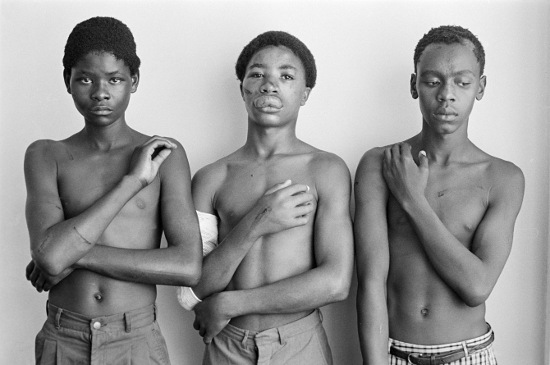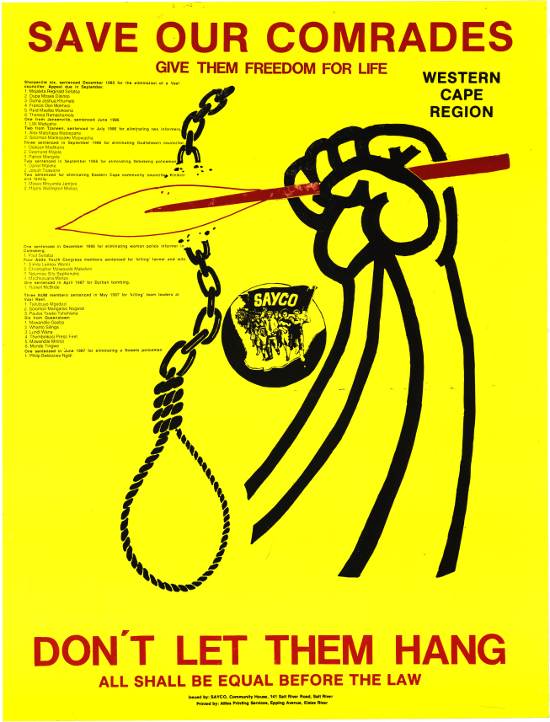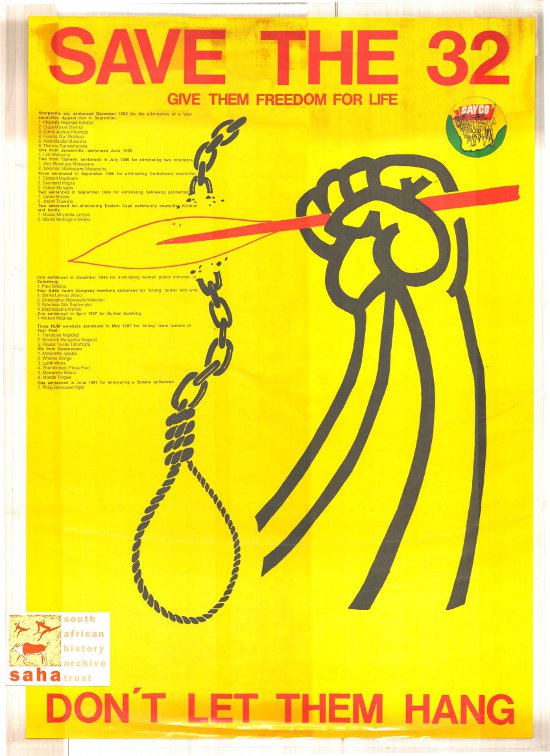
 South African jails were filled with detainees during the 1970s and 1980s. But there were also many political prisoners in prison. A political prisoner was different to a detainee in that he or she was charged with a political crime and thus was allowed to go to trial to try to prove their innocence. Once found guilty, they were sentenced and served time in prison or were hanged.
South African jails were filled with detainees during the 1970s and 1980s. But there were also many political prisoners in prison. A political prisoner was different to a detainee in that he or she was charged with a political crime and thus was allowed to go to trial to try to prove their innocence. Once found guilty, they were sentenced and served time in prison or were hanged.
Because of the repressive laws that the South African government had introduced, almost any kind of resistance to apartheid was classified as a serious offence. Many political prisoners were found guilty under the main ‘security’ laws such as the Internal Security Act, the Sabotage Act and the Terrorism Act. These political prisoners were usually kept on Robben Island or in Pretoria Central Prison. Others who were found guilty of lesser political offences were imprisoned with the general prison population and were treated as ordinary criminals.
 As part of its repressive strategy, the apartheid state was quick to use the death penalty against its political opponents. Prisoners sentenced to hang were sent to Death Row in Pretoria Central Prison to await execution. From the 1960s to the 1980s, the apartheid government executed about 134 political prisoners. One such political prisoner, Solomon Mahlangu, was only 22 years old when he was executed in 1979.
As part of its repressive strategy, the apartheid state was quick to use the death penalty against its political opponents. Prisoners sentenced to hang were sent to Death Row in Pretoria Central Prison to await execution. From the 1960s to the 1980s, the apartheid government executed about 134 political prisoners. One such political prisoner, Solomon Mahlangu, was only 22 years old when he was executed in 1979.
One group of activists known, as the Sharpeville Six, were sentenced to death on the principle of common purpose. They had all formed part of a group that was present at the killing of a local councillor. Their sentence was later changed to a life sentence when the government put a hold on the death penalty during the period of negotiations towards a democratic future. When South Africa moved towards a democracy they were released from prison. Nevertheless, those anxious years on Death Row were devastating.
There were many campaigns against the death penalty and against detention without trial, both inside South Africa and internationally.
Exhibitions in the classroom
Reading the past
SOURCE: "South Africa straving for justice" Gardens of Youth Congress pamphlet, date unknown
Read the source on the Starving for Justice Campaign.
- What was the aim of the Starving for Justice Campaign?
- What steps could ordinary people do to show their solidarity for detainees?
- Would you be prepared to fast in order to support an issue that you believed in strongly?
Visualising the past
Do you think the two posters against the death penalty get their message across effectively or not? Refer to elements in the posters to justify your answer.


